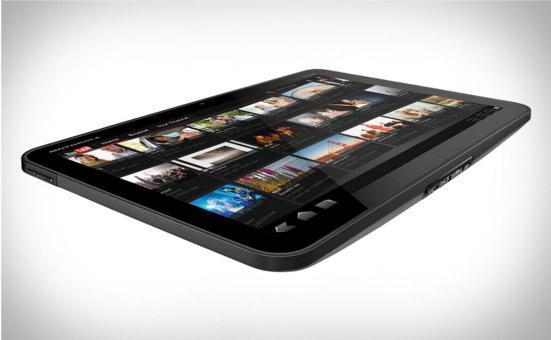
The Motorola XOOM has made quite a few tech-heads salivate over the past few months. The Honeycomb-powered, dual-core tablet from Motorola is only one of many Android tablets slated to hit shelves in the near future. Until recently, we didn't really know what the XOOM would set buyers back; rumors stated that the tablet was set at an enormous $1,200.
Thankfully, Motorola stepped in to put those ludicrous words to rest. Even so, they told us that the 4G version of the tablet would cost $800. I'm still not certain people will be lining up to pay $200 short of a grand for Motorola's first Android tablet. Headed in the right direction though, Moto also revealed that the Wi-Fi only version would run for $600.
The word on the street now is that the tablet will also be offered for $599 with a two-year agreement when it releases with Verizon. Is the XOOM being offered contracted for $599 a good deal? Not really. Not when you have options.
I'm definitely not an average consumer, but the word contract has never struck me kindly, not even before I started buying phones compulsively. Buying a phone on contract is one thing, but something that isn't considered a necessity probably won't strike buyers very well. Especially when the agreement only knocks $200 off of an already steep price tag.
More appropriately priced at $500, buyers were undoubtedly less reluctant to buy a Galaxy Tab off-contract. For those that wanted to save a penny, the device was offered with two-year contracts for $250 on T-Mobile and $300 with Sprint. Yes, Sprint's contracted price was only $200 off of the original price tag, too. But $300 versus $600 is quite a large difference, especially pitting the tablets against each other. I have no doubt in my mind that the XOOM is worthy of a larger price tag, but I'm not sold on Moto's prices.
Reason being, signing a contract will save buyers $200 upfront. In said contract, buyers will be agreeing to pay a minimum of $20 per month for the next two years. That equates to a minimum of $480 before taxes for a 1GB data plan. Say you don't want the Wi-Fi only version because you need broadband access, but you don't need it all the time. Based on how Big Red typically runs things, you will only be required to have it activated on a data plan for one billing cycle if you buy it outright. That means you could actually save money in the long run by having the freedom to choose when you want to pay for data.
Another option would be to buy the Wi-Fi only version of the XOOM for $600 and pay the tethering fee. Again, you would be able to choose when you pay for data. The only negative side is when the XOOM becomes LTE enabled, you won't have LTE access unless you have an LTE phone. If that isn't an issue, this option should be viable.
Realistically, most customers are not going to know their options, and reps aren't obligated to inform them of options either. Some may say that this is how the US wireless industry thrives, and I agree. But like I said before, phones and tablets – though tablets may only be up-scaled smartphones – are different. Smartphones have become a necessity in the way we live our lives, while tablets are still luxury items.
Contracts typically knock anywhere from $300 to $400 off of the full retail value of phones. The reason so much less is taken off of the full retail of tablets is because the carrier makes less back on the device off of rate plans. You aren't paying for calling or texting plans, just a cheaper, limited data plan. What that means is you aren't getting nearly as good of a deal out of signing the contract because the carrier isn't either. It's a good way to save a chunk of change upfront, but you pay back over double what you save throughout the length of the contract. I stress that buyers know this and think of their options before jumping on this deal.